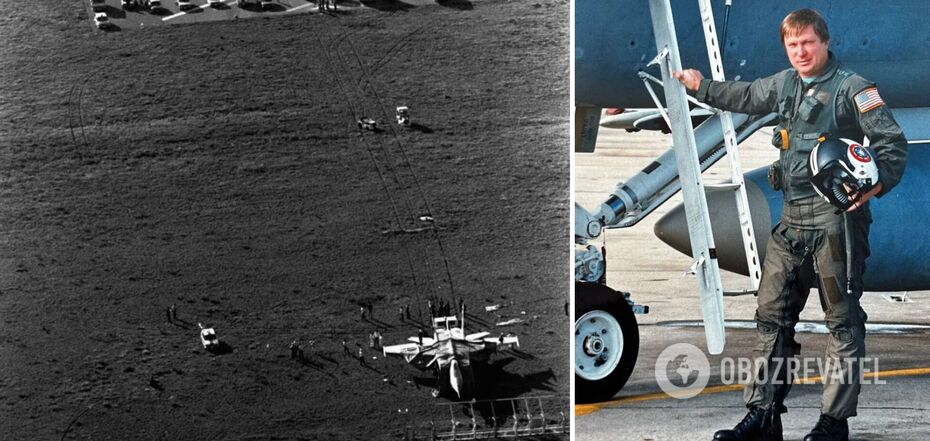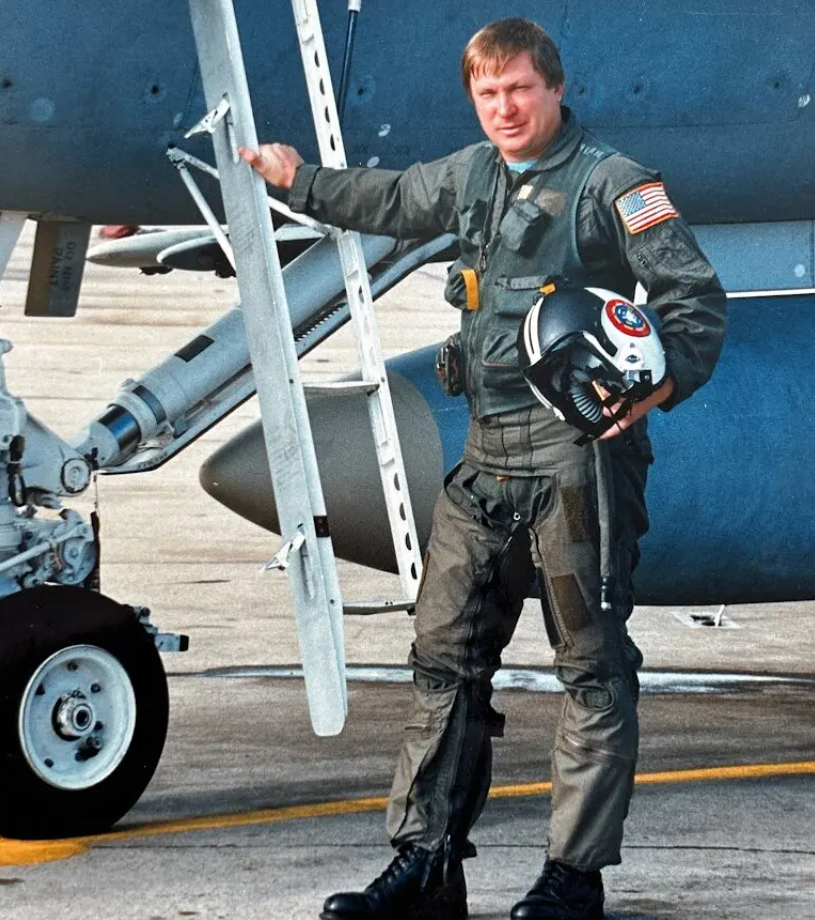Society
Soviet defector pilot Viktor Bilenko, who hijacked a MiG-25, dies in the United States: what is known and what secrets he revealed to the West
Former Soviet pilot Viktor Belenko has died in the United States. In 1976, he fled the USSR in a Soviet MiG-25 supersonic fighter jet.
Thanks to Lieutenant Belenko, the U.S. military received the first sample of this aircraft, which had previously caused serious concerns in the West, for study. The story of the Soviet pilot's deed, which the CIA called "intelligence gold," was told by The New York Times.
Viktor Belenko died in a nursing home in a small town in Southern Illinois on September 24. However, journalists learned about his death only now. The former pilot's son, Paul Schmidt, told the newspaper that his father died after a short illness.
According to The New York Times, Viktor Belenko was born into a simple family of Soviet workers on February 15, 1947, in Nalchik. But he managed to build a military career, making his way into the elite USSR Air Defense Forces, which defended the country from a possible attack from the outside.
"But gradually he became disillusioned with the Soviet system. He had been promised material rewards for his hard work; instead, despite his elite status, he felt that he was treated as an expendable cog in a creaking military machine. He kept his doubts to himself to the point that in the early 1970s he received an exceptional assignment: to undergo training on the MiG-25, one of the newest Soviet weapons," the publication writes.
And Belenko did not miss the chance to escape from the "prison of nations" to a free democratic country. Although, as he later admitted, the young pilot knew virtually nothing about life in the United States, except that he suspected that people there lived much better than in the Soviet Union.
"I longed for freedom in the United States. Life in the Soviet Union had not changed compared to what existed during the time of Tsarist Russia, where there was no freedom," he said immediately after fleeing the USSR.
The main act of his life Belenko committed on a summer day in 1976. He flew a MiG-25 to the coast of Japan and, after a series of maneuvers to attract the attention of the Japanese military in the form of alternately sharp descents and climbs, he landed at the airfield of the southwestern port city of Hakodate.
The Japanese military immediately rushed to the Soviet plane that landed at the Japanese airfield. But Belenko, after getting off the plane, fired twice in the air and waited for the Japanese authorities to arrive.
When they arrived at the scene of the emergency, Belenko went out to them and told them that he had flown to Japan to defect with the then-new Soviet MiG-25 supersonic fighter, which at the time caused great fear among the Western military. After all, this huge fighter was capable of climbing to high altitudes, and its speed was several times higher than the speed of sound.
In addition, the NATO military was frightened by what they believed to be the high maneuverability of the MiG-25, and the fact that, as the Alliance assumed, with its arrival, the USSR was able to shoot down supersonic bombers and reconnaissance aircraft that had previously flown through Soviet airspace with impunity.
"Now, thanks to Lieutenant Belenko, they (the Western military - Ed.) had a pristine model to study. George W. Bush, then director of the Central Intelligence Agency, called the incident "intelligence gold," The New York Times reported.
Belenko had been planning his escape for several months. He planned to carry it out when he and his squadron would go on a training mission over the Sea of Japan without weapons. This, as Belenko correctly calculated, would bring him closer to freedom and deprive his colleagues of the opportunity to prevent his escape.
After Belenko landed, the Japanese handed him and the plane over to U.S. representatives. The U.S. military disassembled and studied the MiG-25, and a few weeks later returned it in parts to the Soviet Union. The pilot was granted asylum and flew from Japan to the United States for questioning.
The study of the Soviet fighter reassured the Western military. The giant wingspan, as it turned out, was not needed for maneuverability, but to lift an airplane with 15 tons of fuel. Fears about the MiG-25's ability to shoot down American aircraft were also overblown: its speed could not match that of American aircraft.
"However, the most valuable thing was what Lieutenant Belenko told the Americans about the conditions and morale in the Soviet armed forces. American officials had long believed that Soviet soldiers were supermen. Lt. Belenko said they were often starved, beaten, crammed into cramped living quarters and subjected to sadistic punishment for the slightest infraction," The New York Times writes.
The newspaper claims that, once on the American aircraft carrier, Belenko was amazed that sailors could receive unlimited food for free. He was also embarrassed when a Soviet pilot bought a can of cat food in a store, as he could not even imagine that it was food for animals. When the mistake was pointed out to Belenko, he shrugged his shoulders and said that this canned food was still tastier than what Soviet citizens bought in Soviet stores.
Belenko was also shocked to learn about the shortcomings of the vaunted MiG-25, which he was not supposed to know about in the USSR.
"If my regiment could see for five minutes what I saw today, there would be a revolution," the pilot said.
In 1980, the US Congress passed a law granting Belenko citizenship. In an effort to avoid attention, he took the surname Schmidt and moved frequently, mostly living in small towns in the Midwest. He worked as a consultant for aerospace companies and government agencies.
His personal life in the United States did not work out for the former Soviet pilot. He divorced his wife Coral Garaas. In addition to his son Paul, he is survived by another son, Tom Schmidt. His sons gave Viktor Belenko four grandchildren. In a conversation with his son, Belenko himself called the stories of Soviet propaganda that the deserter pilot allegedly left his wife and child in the USSR a lie.
After the end of the Cold War, he began to appear at air shows from time to time and again to use his real name.
But, as Belenko's son Paul emphasizes, his father never sought to capitalize on the international fame that fell upon him.
"He lived a very private life. It flew by unnoticed, literally and figuratively," Paul Schmidt told reporters.
Earlier, OBOZ.UA told about secret gay meeting places in the USSR. In his photo book Moscow, post-Soviet conceptual artist Yevgeny Fixa opened another page of the Russian capital's history that is being silenced today - the gay history. The artist showed the architecture of Moscow from an unexpected angle, including in his book only those objects that were underground places of secret meetings and gatherings of homosexuals in the USSR.
Only verified information is available on our Telegram channel OBOZ.UA and Viber. Do not fall for fakes!






























